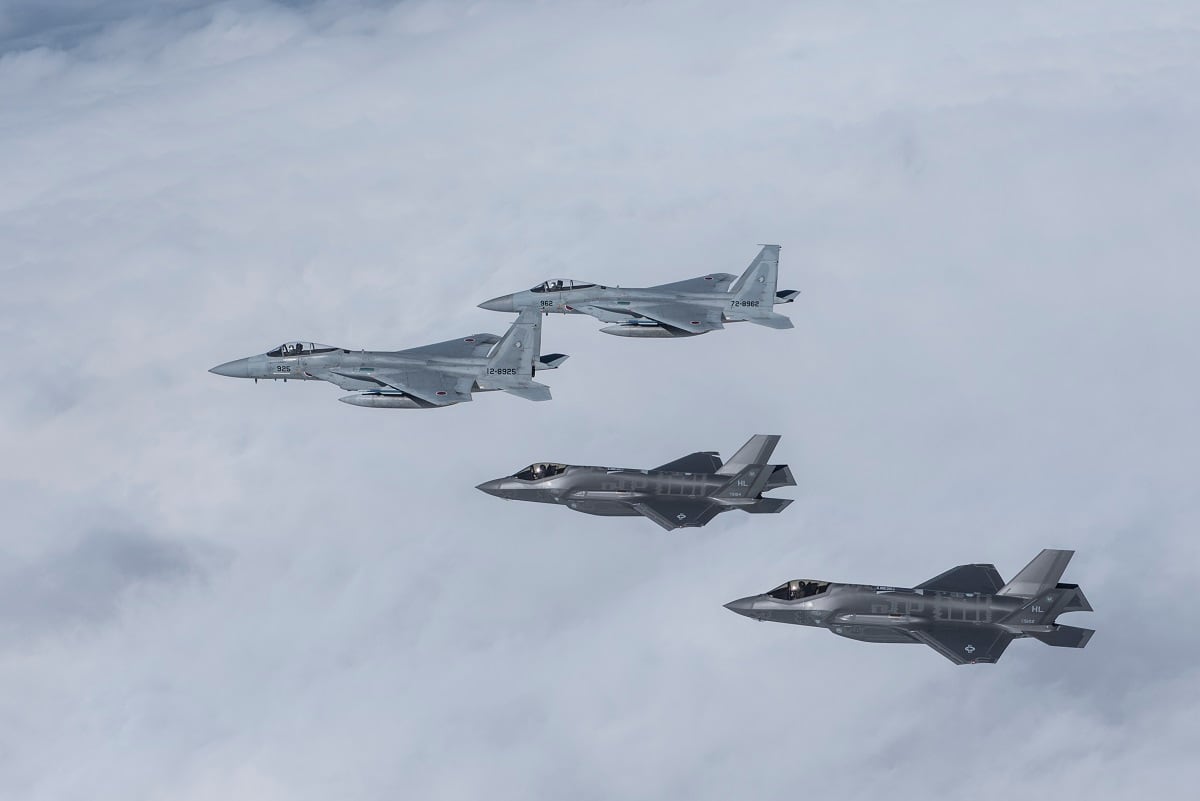SINGAPORE — When the U.S. Marine Corps’ first forward-deployed F-35 fighter squadron sets sail with the amphibious ship Wasp this year, it will be the first opportunity for many of the pilots to carry out the jet’s distinctive vertical landing aboard a ship.
“There’s very few [pilots] that have actually landed onboard a ship,” Maj. Jesse Peppers, the assistant operations officer for Marine Fighter Attack Squadron 121, said on the sidelines of the Singapore Airshow on Thursday. Two F-35Bs were featured as static displays during the event, which runs from Feb. 6 to 11.
“They will have simulated landings onboard a ship in the simulator and on the field, in stationary landing areas, but then they go out to the ship, it’s going to be the first time that they’ve actually landed onboard.”
Click here for more from Singapore Airshow 2018!
Peppers, a former Hornet pilot who has operated the F-35 since 2014 and flew one of the B-model planes to Singapore for the show, won’t be one of the Marines from Japan headed to the Wasp this year. His first short-takeoff-and-vertical-landing, or STOVL, aboard an amphibious ship will come during a later deployment, he said.
VMFA-121, located at Marine Air Station Iwakuni in Japan, is comprised of a mix of experienced pilots who transferred from other aircraft to brand-new pilots for whom the F-35 will be the first plane they learn to fly.
The squadron’s commanding officer is originally an F-35 test pilot who is one of the few Marines out there with practical experience doing the STOVL while at sea. Some of the F-35 pilots selected to deploy aboard the Wasp also have experience performing STOVL operations with the AV-8B Harrier, Pepper said.
RELATED

In the run-up to the deployment, pilots will keep to a “standard training profile” with one exception: an increased focus on practicing taking off and landing on an amphibious assault ship using simulators or by doing “field carrier landing practices” where jets practice flying as they would have to fly while embarked.
“It’s not like we’re just ragtag throwing everyone out there, unprepared. It is very structured,” he said. “Especially operations at Iwakuni with a site available to do a vertical landing, there’s no shortage of vertical landings happening at Iwakuni.”
The Marine Corps’ F-35B is characterized by a slightly different version of Pratt & Whitney’s F135 engine containing a lift fan and a swivel module that produces the vertical thrust necessary to get the jet to hover. Those systems give the jet the ability to take off from the short runways aboard amphibious ships and to land by slowly hovering onto the deck of the vessel — a feat that looks more like a UFO flying in a science fiction film than the sudden stop of a “trap” landing aboard an aircraft carrier.
“You kind of go through a couple different stages of grief the first time,” joked Peppers, who as a former Hornet pilot had no prior STOVL experience before flying the F-35.
“The first time, being a legacy pilot used to landing kind of conventionally, [I was] a little timid at first to press the STOVL button that takes you into what we call ‘mode four’ and get you to that hover regime, but I think once you press it and have that life-changing experience time after time, then you kind of get numb to it. … Now it is really administrative, it’s just another tool I have in my bag of tricks.”
The Marine Corps hasn’t described exactly when the Wasp will begin its deployment in the Asia-Pacific region. The ship arrived in its new home port of Sasebo, Japan, last month.
Valerie Insinna is Defense News' air warfare reporter. She previously worked the Navy/congressional beats for Defense Daily, which followed almost three years as a staff writer for National Defense Magazine. Prior to that, she worked as an editorial assistant for the Tokyo Shimbun’s Washington bureau.





